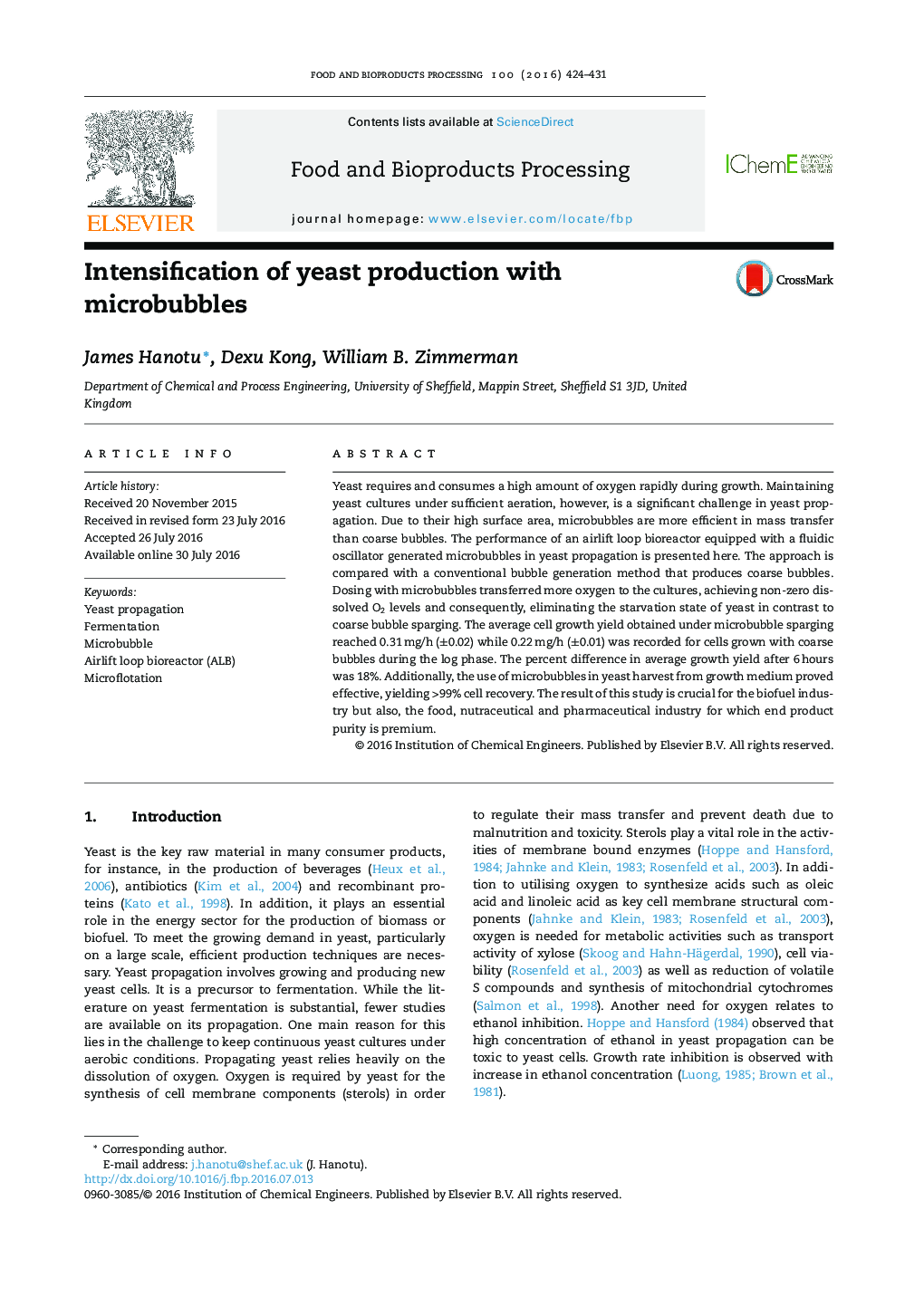| Article ID | Journal | Published Year | Pages | File Type |
|---|---|---|---|---|
| 6451770 | Food and Bioproducts Processing | 2016 | 8 Pages |
â¢Yeast is known to survive and thrive within sufficient levels of dissolved oxygen.â¢Microbubbles transfer O2 at rates superior to yeast consumption.â¢Cell recovery efficiency varies directly with particle size.â¢Particle size is a function of flocculant concentration and pH.â¢Enhancing yeast production is critical in consumer good production, relying on the organism.
Yeast requires and consumes a high amount of oxygen rapidly during growth. Maintaining yeast cultures under sufficient aeration, however, is a significant challenge in yeast propagation. Due to their high surface area, microbubbles are more efficient in mass transfer than coarse bubbles. The performance of an airlift loop bioreactor equipped with a fluidic oscillator generated microbubbles in yeast propagation is presented here. The approach is compared with a conventional bubble generation method that produces coarse bubbles. Dosing with microbubbles transferred more oxygen to the cultures, achieving non-zero dissolved O2 levels and consequently, eliminating the starvation state of yeast in contrast to coarse bubble sparging. The average cell growth yield obtained under microbubble sparging reached 0.31 mg/h (±0.02) while 0.22 mg/h (±0.01) was recorded for cells grown with coarse bubbles during the log phase. The percent difference in average growth yield after 6 hours was 18%. Additionally, the use of microbubbles in yeast harvest from growth medium proved effective, yielding >99% cell recovery. The result of this study is crucial for the biofuel industry but also, the food, nutraceutical and pharmaceutical industry for which end product purity is premium.
